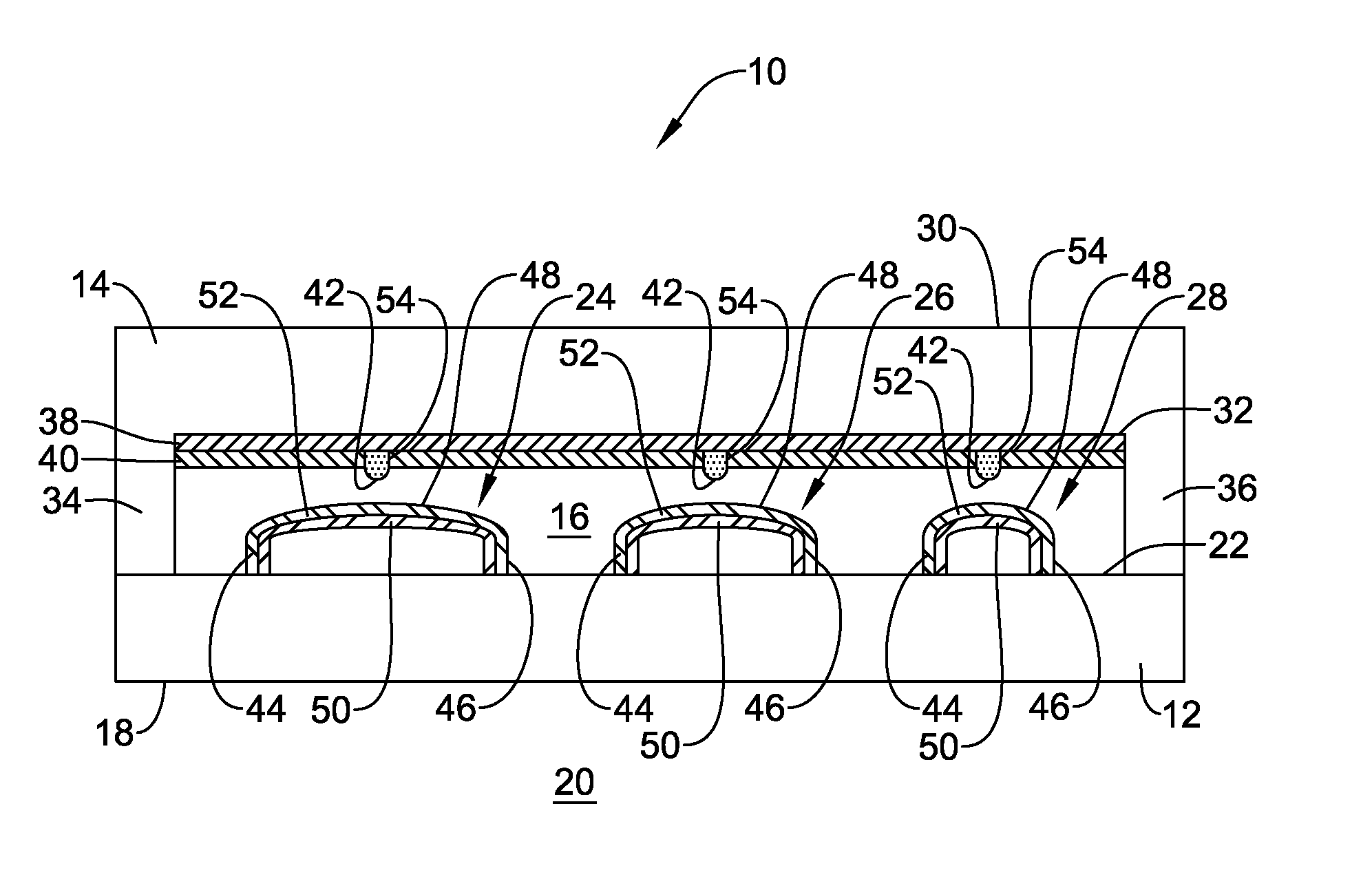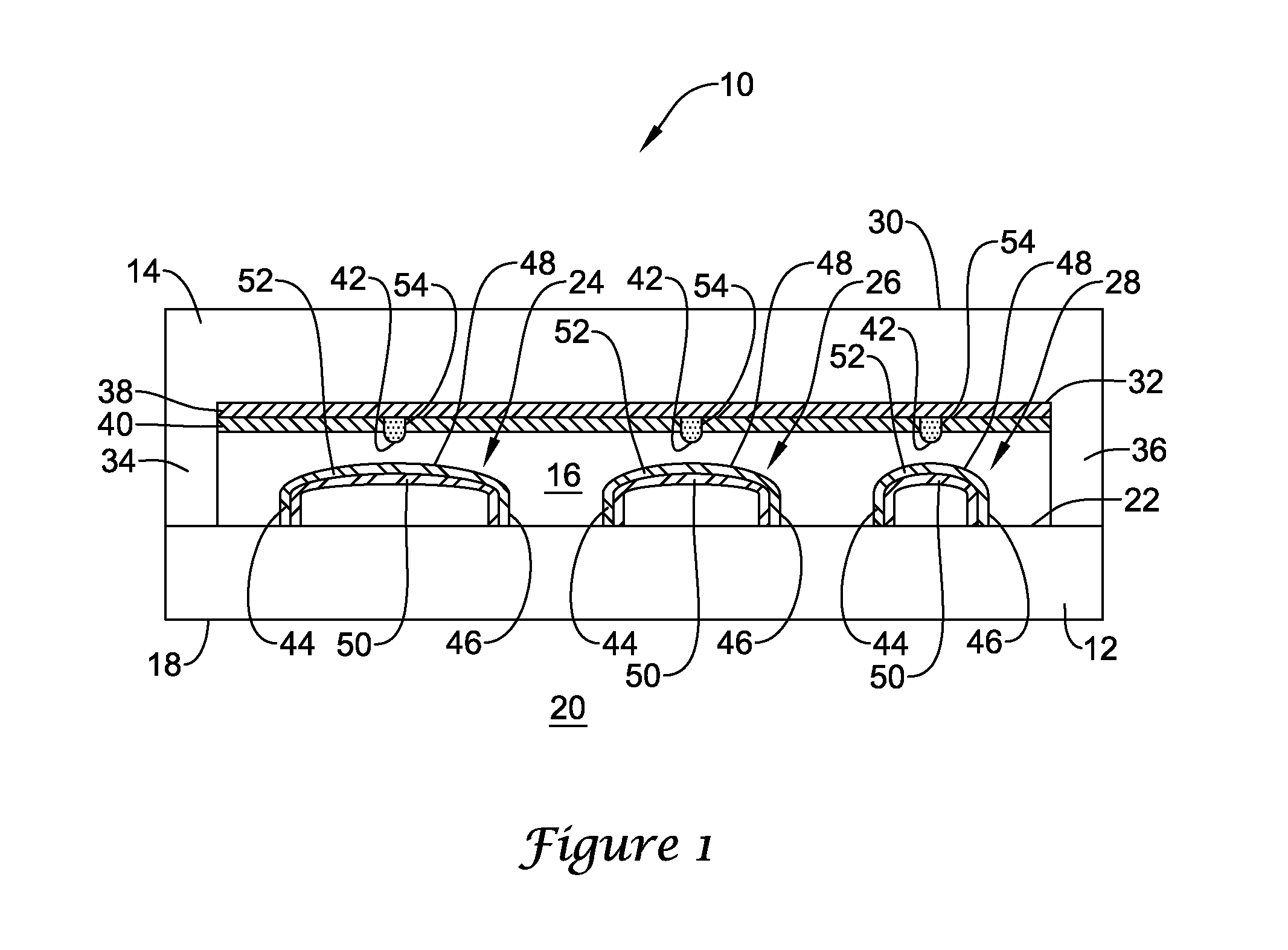Passive analog thermal isolation structure
a passive analog and thermal isolation technology, applied in the direction of process and machine control, lighting and heating apparatus, instruments, etc., can solve the problems of thermal bimorph to deformation, and achieve the effect of reducing power consumption and reducing the complexity of control electronics required
- Summary
- Abstract
- Description
- Claims
- Application Information
AI Technical Summary
Benefits of technology
Problems solved by technology
Method used
Image
Examples
Embodiment Construction
[0014] The following description should be read with reference to the drawings, in which like elements in different drawings are numbered in like fashion. The drawings, which are not necessarily to scale, depict selected embodiments and are not intended to limit the scope of the invention. Although examples of construction, dimensions, and materials are illustrated for the various elements, those skilled in the art will recognize that many of the examples provided have suitable alternatives that may be utilized.
[0015]FIG. 1 is a schematic side cross-sectional view showing an illustrative passive analog thermal isolation structure 10 in accordance with an exemplary embodiment of the present invention. As shown in FIG. 1, the thermal isolation structure 10 can include a bottom substrate 12 and a top cap 14, which together define a sealed interior cavity 16 of the structure 10. The bottom substrate 12 can have a first side 18 that can be placed in intimate thermal contact with an exte...
PUM
 Login to View More
Login to View More Abstract
Description
Claims
Application Information
 Login to View More
Login to View More - R&D
- Intellectual Property
- Life Sciences
- Materials
- Tech Scout
- Unparalleled Data Quality
- Higher Quality Content
- 60% Fewer Hallucinations
Browse by: Latest US Patents, China's latest patents, Technical Efficacy Thesaurus, Application Domain, Technology Topic, Popular Technical Reports.
© 2025 PatSnap. All rights reserved.Legal|Privacy policy|Modern Slavery Act Transparency Statement|Sitemap|About US| Contact US: help@patsnap.com



